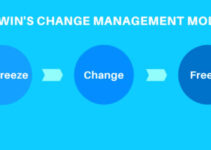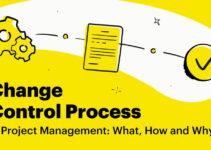Bridges transition model guides businesses and companies through the change and transition. Change and transition happen to people whether they agree or don’t agree. However, the human response to change has multiple perspectives through which managers and leaders guide and support their team members. Transition is the process and it starts when the change happens. Today, we’ll discuss Bridges transition change management; 3 stages of the bridges transition model; and implementing the model in change management.
Change management consultant “William Bridges” developed the transition model in his book “Transition Making Sense of Life’s Changes in 1979. He and his business partner and wife Susan Bridges revised and republished their book several times in their career. However, they launched a revised edition of “Managing Transition” in 1991 and it focused on implementing the model in the workplace.
3 Stages of Bridges Transition Model
Let’s discuss the three stages of Bridges transition change management model; they’re as follows;
Ending Phase
The first stage of the transition model focuses on recognizing the end of old methods of doing things. The end may be about anything like the tenure of business or the old methods of doing things. Employees and team members would experience grief and they resist the change when it is happening in the organization. The focus of the first stage is allowing team members to comprehend change; why the change is happening and how it is significant.
Some of the main emotions employees and team members experience in the ending stage are as follows;
- Denial
- Sad
- Fearful
- Anger
Transition Phase
When team members and employees realize the significance of change and accept the fact that change is happening. It is the neutral stage and the in-between stage causes a lot of confusion and uncertainty. However, it offers them a great opportunity for creativity, innovation, and a new beginning. Organizational leaders and managers should provide support and guidance to the employees and team members while promoting and prioritizing transparency and visibility.
Some of the main emotions employees and team members experience in the transition stage are as follows;
- Disoriented
- Numb
- Depressed
- Confused
New Beginning Phase
The final stage of the transition model focuses on setting up a solid foundation and base for moving forward. Leaders and managers should offer clarity to the employees and team members about the changed stage and the new beginning to ensure stability comes along with it. However, employees and team members would accept new changes, follow the new routines, and accept the new normal.
Some of the main emotions employees and team members experience in the new beginning stage are as follows;
- Commitment
- Excited
Implementing Bridges Transition Change Management Model
Some of the main steps of implementing the bridges transition change management model; they’re as follows;
Addressing Employees Fears & Concerns
While introducing and implementing the changes into the organization, employees are feeling fearful, angry, and disoriented about the change program. The organization should clearly communicate about the changes and offer them needed support and guidance. It is significant for them to acknowledge their fears and concerns, and help them to move to the next stage without falling behind.
In fact, leaders and managers should motivate them to speak and actively listen to the concerns and queries of employees and team members. Open and transparent communication would help them to easily implement, and the employees would be onboard about the changes.
Transition KPIs
It is necessary for leaders and managers to develop KPIs to evaluate the performance of the transition state. It allows them to track whether the team is delivering the outcomes and results and make adjustments in the existing channel to achieve the desired results. However, some of the main examples of KPIs are as follows;
- Effectiveness of communication
- Measuring KPIs for the relevant project
- Effectiveness and training participation
- Satisfaction of employees and stakeholders
- Incidents relevant to the change project
- Change implementation time
Preparing Employees For Change
Leaders and managers should inform employees and team members while implementing changes. They need to be clear about their roles; the benefits and expectations that come along with the changes. The change implementation team should timely update and inform their team members and offer them needed support; motivating them about the upcoming changes by highlighting their benefits.
Supporting Employees
During the change implementation phase, employees and team members require additional skills and expertise to prepare for the change. Leaders and managers should conduct training programs and learning sessions for employees to upgrade the skills and expertise of employees and guide employees during the training program.
Training Managers
Along with training the employees and team members; leaders should conduct training programs for the managers who are working side-by-side with the employees. It serves as a positive reinforcement that the change is happening at the top of the organization. Well-trained managers can support employees better during the change and transition process.
Conclusion: Bridges Transition Change Model |Bridges Transition Model of Change Management
After an in-depth study of bridges transition change management model; we have realized that the transition model is highly significant for employees and team members. If you are learning about bridges transition mode for change; then you should keep in mind the abovementioned three stages of transition, and implementation in change management.
Ahsan is an accomplished researcher and has a deep insight in worldly life affairs. He goes Live 3 days a week on various social media platforms. Other than research writing, he’s a very interesting person.


